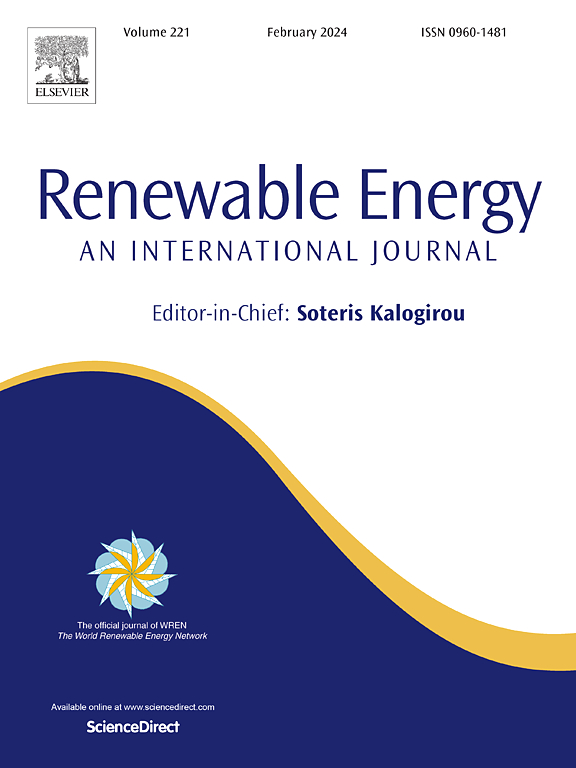Transfer, capture, and conversion of low concentration CO2 in algae microbial fuel cells by algae bacteria symbiosis and cation intervention
IF 9.1
1区 工程技术
Q1 ENERGY & FUELS
引用次数: 0
Abstract
Algae microbial fuel cells (AMFCs) can be served as the distributed devices for CO2 sequestration. In this study, effects of saline cations and algae-bacteria synergy on CO2 transfer, capture, and conversion in AMFCs were quantified. Molecular dynamics (MD) simulations were used to compute diffusion coefficients and probe CO2/HCO3- interactions with algal cell membranes. Experiments based on bench-scale AMFCs focused on CO2 removal efficiency, dissolved inorganic carbon (DIC), biomass, electrochemical performance, and microbial community tests. MD simulations show that replacing Na+ with K+ increased diffusion coefficients of CO2 and by 74 % and 70 %, respectively. SEM images confirmed MD results that K+ induced more folds and pits on algal plasma membranes, prolonging local CO2/ residence. DIC and biomass experiments demonstrated that algae-bacteria synergy achieved higher CO2 capture and conversion capacity by tuning dissolved O2 and pH. 16S rRNA analysis indicated that algae and bioelectricity reshaped bacterial flora by selecting and enriching suitable species. Moreover, bacteria acted as CO2 enrichment agents for algae by consuming the needless dissolve organic carbon. In brief, K+ improved mass transfer and absorption of CO2/. Algae-bacteria symbiosis and bioelectronic stimulation boosted CO2 capture and conversion.

藻类微生物燃料电池中低浓度CO2的转移、捕获和转化
藻类微生物燃料电池(amfc)可以作为分布式的CO2固存装置。在本研究中,我们量化了盐离子和藻类-细菌协同作用对amfc中CO2转移、捕获和转化的影响。利用分子动力学(MD)模拟计算扩散系数,探测CO2/HCO3-与藻类细胞膜的相互作用。基于实验规模的amfc的实验重点是CO2去除效率、溶解无机碳(DIC)、生物量、电化学性能和微生物群落测试。MD模拟表明,用K+代替Na+可使CO2和HCO3-的扩散系数分别提高74%和70%。SEM图像证实了MD的结果,K+在藻质膜上诱导了更多的褶皱和凹坑,延长了局部CO2/HCO3-的停留时间。DIC和生物量实验表明,藻类-细菌协同作用通过调节溶解O2和ph来获得更高的CO2捕获和转化能力。16S rRNA分析表明,藻类和生物电通过选择和丰富合适的物种来重塑细菌菌群。此外,细菌通过消耗不需要的溶解有机碳而成为藻类的CO2富集剂。简而言之,K+改善了CO2/HCO3-的传质和吸收。藻类-细菌共生和生物电子刺激促进了二氧化碳的捕获和转化。
本文章由计算机程序翻译,如有差异,请以英文原文为准。
求助全文
约1分钟内获得全文
求助全文
来源期刊

Renewable Energy
工程技术-能源与燃料
CiteScore
18.40
自引率
9.20%
发文量
1955
审稿时长
6.6 months
期刊介绍:
Renewable Energy journal is dedicated to advancing knowledge and disseminating insights on various topics and technologies within renewable energy systems and components. Our mission is to support researchers, engineers, economists, manufacturers, NGOs, associations, and societies in staying updated on new developments in their respective fields and applying alternative energy solutions to current practices.
As an international, multidisciplinary journal in renewable energy engineering and research, we strive to be a premier peer-reviewed platform and a trusted source of original research and reviews in the field of renewable energy. Join us in our endeavor to drive innovation and progress in sustainable energy solutions.
 求助内容:
求助内容: 应助结果提醒方式:
应助结果提醒方式:


